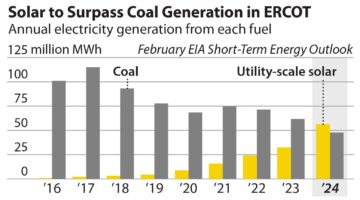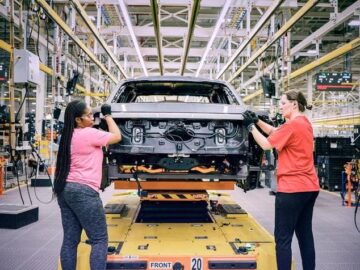Guest blog by Nitish Arora and Jessica Korsh
India needs to exponentially increase the number of electric vehicle (EV) charging stations to power the potential 102 million EVs on the road in 2030. Reaching this target is essential to prevent a climate catastrophe and improve the unhealthy air quality for millions of Indians. A robust public charging network is essential for accelerating transportation electrification. India’s power utility distribution companies (DICOMs) are critical in scaling up charging infrastructure, as evidenced by countries with successful EV charging deployment.
With widespread transportation electrification, utilities and DISCOMs are evolving to do more than provide electricity. They are uniquely positioned to develop EV charging infrastructure and should be involved early in the planning process. As seen in the U.S., utilities can collaborate and take the lead in building charging infrastructure. In India, limited communication between utilities and charge point operators (charging service providers) is often responsible for slowing the development of charging infrastructure. DISCOMs should be involved with identifying potential charging sites; coordinating with landowners, permit offices, and regulators; and working with charge point operators. Another factor slowing EV deployment is the high upfront costs to build the charging infrastructure and connect to the grid. However, frontloaded investments into charging infrastructure and the grid by utilities can lead to large payoffs in the long term. Further, to ensure grid stability, it is important for DISCOMs to improve the utilization of the existing grid infrastructure and include EV charging loads into electrical network planning and expansion. While EVs are cleaner even with conventional grid power, pairing them with renewable energy can accelerate India’s decarbonization efforts.
DISCOMs can help improve power demand management and increase integration of renewable energy through the following recommendations:
- Communication is key to planning for charging infrastructure. By utilities establishing clear communication channels with other stakeholders they can help reduce costs. For example, utilities can share records on the hosting capacity of their distribution networks, with charging service providers to make the siting process simpler, faster, and accurate. Additionally, utilities can assign a single point of contact to service providers for each project. This helps keep a project on track, avoiding potential costly delays.
- Adopt a forward-looking business and management approach. DISCOMs in conjunction with stakeholders should anticipate future grid and charging needs. Futureproofing requires balancing the extra cost incurred today against the savings that it can offer in the future. Utilities should install excess capacity when installing early chargers. This will help plan for the frontload investments and minimize costs when upgrades to upstream power infrastructure are later required. Additionally, while early utilization of charging infrastructure remains low, utilities should rationalize/annualize upstream power infrastructure costs instead of building everything upfront.
- Improved flexibility and advanced grid integration are essential as India decarbonizes it economy, increases the share of renewable energy, and dramatically increases its overall energy demand. While EVs are only expected to be about four to five percent of the country’s total power generation capacity, it is important that they are effectively integrated in the grid to maintain reliable electricity. DISCOMs should encourage managed charging capability (charging at times when demand is low) and matching EV charging to hours when solar and wind generation is abundant. Utilities commonly employ time-of-day (TOD) tariffs to incentivize consumers to shift their charging from peak times to off-peak times. Smart charging, chargers with two-way communication, is becoming standard internationally. This allows utilities to lower the rate or turn off charging when the grid is strained.
Transitioning to EVs in India is a major opportunity for revving up the economy, spurring job growth, improving air quality, and reducing carbon emissions. A tremendous increase in public charging infrastructure from the current 1,800 public charging points to a network of over 2.9 million could create a massive market opportunity requiring cumulative investments of up to $2.9 billion (about Rs 20,600 crore) until 2030.
Arora is an electric mobility expert working as a consultant with NRDC based in New Delhi. Jessica Korsh is a climate health expert working with NRDC based in New York.
Originally published by NRDC, Expert Blog.
Appreciate CleanTechnica’s originality? Consider becoming a CleanTechnica Member, Supporter, Technician, or Ambassador — or a patron on Patreon.

Source: https://cleantechnica.com/2021/10/23/utilities-ev-dreams-in-india/
- "
- 9
- Advertise
- Billion
- Blog
- build
- Building
- business
- Capacity
- carbon
- carbon emissions
- channels
- charge
- charging
- charging stations
- cleantech
- Cleantech Talk
- Communication
- Companies
- consultant
- Consumers
- Costs
- countries
- Current
- data
- delays
- Delhi
- Demand
- develop
- Development
- dreams
- Early
- economy
- Electric
- electric vehicle
- electricity
- Emissions
- energy
- EV
- expansion
- Flexibility
- future
- Grid
- Growth
- Guest
- Health
- High
- hosting
- HTTPS
- image
- Increase
- india
- Infrastructure
- integration
- Investments
- involved
- IT
- Job
- Key
- landowners
- large
- lead
- Limited
- Long
- major
- management
- Market
- million
- mobility
- network
- networks
- New York
- offer
- Opportunity
- Other
- Patreon
- planning
- podcast
- power
- project
- public
- quality
- records
- reduce
- Regulators
- renewable energy
- Reuters
- scaling
- Share
- shift
- Sites
- Slowing
- smart
- solar
- Stability
- successful
- Target
- tariffs
- The Future
- track
- transportation
- u.s.
- us
- utilities
- utility
- vehicle
- wind


 100vw, 634px”></a></p>
<p id=) Source: image adapted from FutureBridge, 2019
Source: image adapted from FutureBridge, 2019
 100vw, 634px”></a></p>
<p id=) Source: BluSmart India
Source: BluSmart India








